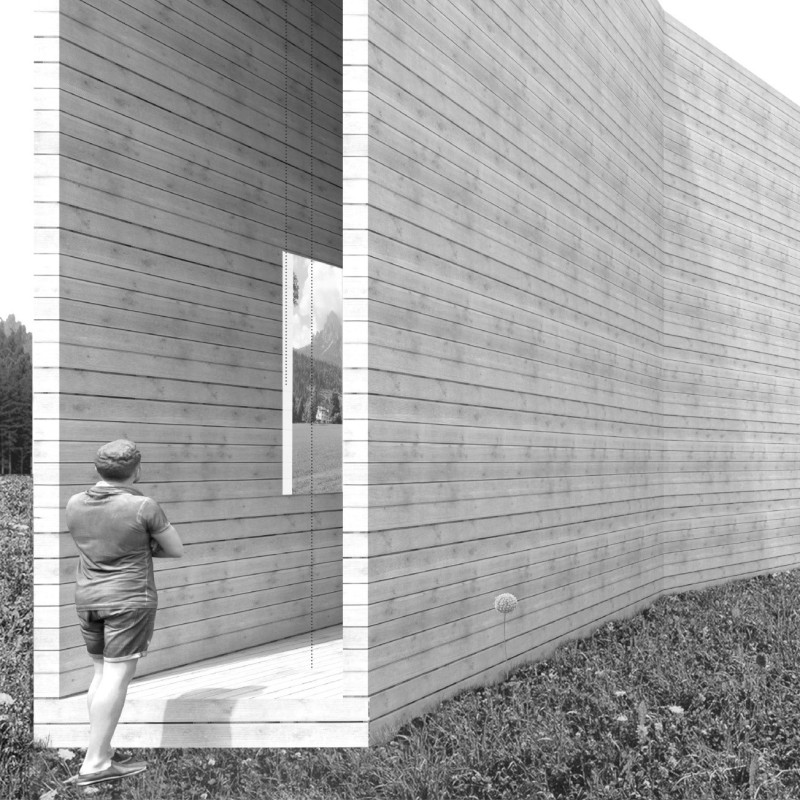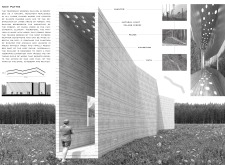5 key facts about this project
The temporary wooden pavilion is proposed for areas heavily impacted by climate change, particularly where large sections of forest have been lost. The pavilion serves as a natural monument, designed to embody resilience and restoration while providing shelter for both people and wildlife. The overall concept is based on the archetype of the forest, with wood chosen as the primary material to create a direct link to the environment surrounding the structure.
Design Concept
The pavilion emphasizes sustainability through its use of materials. It is constructed from wood sourced from trunks damaged by severe weather, illustrating the relationship between nature and human activity. This choice not only minimizes waste but also tells a story of recovery in ecosystems affected by climate change.
Functional Aspects
One of the important features is the multifunctional use of the pavilion. It is designed for on-site construction, allowing it to adapt to the local landscape. It provides shelter for animals and people in areas where trees are sparse. In addition, the pavilion includes a space dedicated to a photographic exhibition that focuses on the lasting qualities of wood. This educational platform helps raise awareness about environmental issues.
Interior Experience
Inside, the pavilion invites visitors to engage with its exhibition area, which highlights the resilience of wood as a material. The exhibition narrates how wood not only endures the effects of human actions but also has the potential for renewal. Natural light plays an essential role in enhancing the interior, resulting in a warm and welcoming space for visitors to reflect and connect with nature.
The design features various openings and layouts that allow for movement and interaction, making it easy for visitors to explore. The pavilion fits into its environment, echoing the natural landscape while representing the ongoing relationship between humans and the world around them.



















































